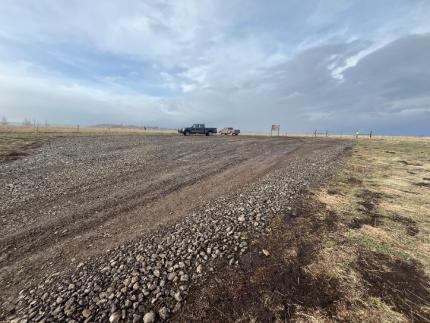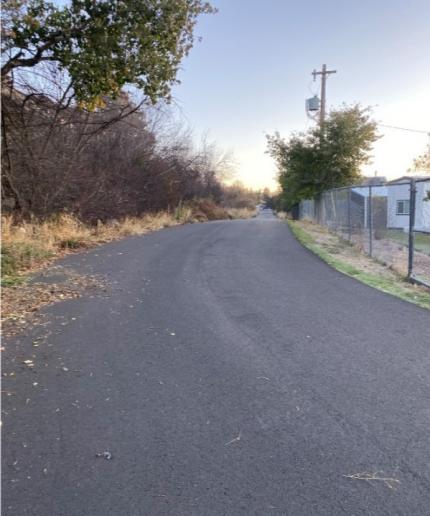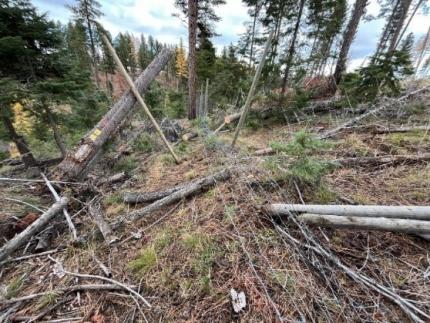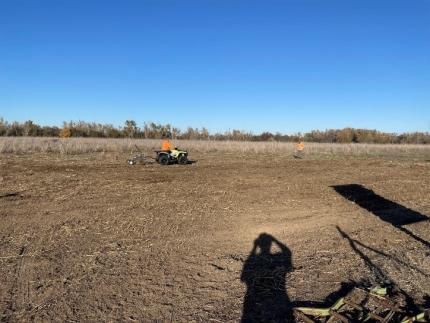Managing Wildlife Populations
Vulcan Bighorn Sheep Survey: Wildlife Biologist Turnock conducted a ground survey for the Vulcan bighorn sheep herd. Biologist Turnock found the sheep in small groups suggesting that rut activity may be winding down.

Cougar: Biologists Lowe and Brinkman joined biologists with the Kalispel Tribe’s Natural Resources Department to capture a cougar in Riverside State Park. Other participants in this capture included Sargent Leonetti, state park employees, and members of the media. The cougar was captured as part of a larger study by the Kalispel Tribe to examine the effectiveness of hazing, at reducing the habituation of cougars to human presence in highly trafficked areas (e.g., state parks).
A news article discussing this capture effort can be found here: Learning from cats: Cougar spotted at Riverside State Park now part of research project | The Spokesman-Review

Elk Retrieval: Wildlife Conflict Specialist Kolb assisted Detachment 33 officers with the retrieval of multiple elk harvested by a hunter in Walla Walla County. Officers seized one of the elk and Kolb assisted with getting the carcass donated to a local charity.
Chronic Wasting Disease (CWD): Biologist Baarstad collected CWD and tooth samples from an elk harvested by a Creston resident.
Chronic Wasting Disease Operations: Natural Resource Technician Heitstuman followed up on emails regarding improving the sample gathering process from the Department of Transportation (DOT) pits. Heitstuman collected five CWD samples from DOT pits. One sample was extremely infected. Pictures were taken and information was shared with Biologist Wik and members of the CWD team.
Private Lands Biologist Nizer worked at a chronic wasting disease (CWD) check station in Deer Park off Highway 395. The CWD check station brought in many hunters over the weekend for sampling their deer in Spokane and Stevens County.
Wolf Report: Biologist Lowe responded to a report of a possible dead wolf on I-90 near Sprague. The animal hit on the roadway turned out to be a moose calf.
Tucannon Bighorn Sheep: Wildlife Area Manager Dingman received an email from a landowner outside Pomeroy that a bighorn ram was in the area of his domestic sheep. Dingman assisted Biologist Wik in locating the ram. No one saw the ram actually in with the domestic sheep, so the ram was just hazed back into the Tucannon Valley towards the rest of the bighorn herd.
Providing Recreation Opportunities
Asotin Creek Wildlife Area Harlow Ridge Parking Area: Asotin County graciously improved WDFW’s parking area at Harlow Ridge on the Asotin Creek Wildlife Area recently. The rock came from a pit on WDFW land near Rockpile Creek where the county has been pulling rock for county road improvement projects. They hauled the rock to Harlow Ridge, spread the rock, and rolled it for a smooth surface. They also improved the county road leading to the parking area.


Williams Lake Access Site: This week Region 1 Access Manager Dziekan and Natural Resource Technician Brant were able to spin trim the driveway going into the Williams Lake Access Area. Most of the work was done with string trimmers, but Dziekan and Brant also got the shears and saws out to push back some of the woody debris. All the large debris was loaded in the trailer for the dump, and the grass was blown back into the ditch. Having the grass trimmed this winter will open the possibility of herbicide application next spring that will prevent the grass from growing back and requiring routine cutting.


Columbia Plateau Wildlife Management Association: Private Lands Biologist Nizer spoke with Columbia Plateau Wildlife Management Association (CPWMA) President Lubey to discuss enrolling another 1,000 acres into the Hunt by Written Permission Program in addition to the landowner hunting permits. The proposed acreage will be outside of the town Tyler in GMU 130. Nizer created maps for the proposed property and submitted an amendment for the existing contract. CPWMA also talked about another landowner interested in joining and providing another 1,200 acres into Hunt by Written Permission Program too. Nizer will follow up with CPWMA and the landowner to discuss the process.
Pheasant Release: Wildlife Area Assistant Manager Palmer met with Private Lands Biologist Baarstad on Thursday morning to take delivery of pheasants for release at Sherman Creek that afternoon. The periodic fall releases provide pheasant hunting opportunities in northeast Washington; this one was timed to coincide with Veteran’s Day weekend.

Providing Conflict Prevention and Education
Swan Lake Wolf Activity: Wildlife Conflict Specialist Harris talked with U.S. Forest Service (USFS) staff members regarding wolf activity at the Swan Lake Campground. USFS staff members reported that the campground is closed for the winter and there have been no recent wolf sightings.
Asotin County Elk Meeting: Wildlife Conflict Specialist Wade, Natural Resource Technician Heitstuman, and District Biologist Wik attended a meeting with Asotin County producers to discuss elk populations, tag allocations, and damage issues. Wade answered questions regarding commercial crop damage and the use of damage/kill permits. Wik discussed antlered and antlerless tag allocations and possible changes to the number of tags available. Producers were in favor of increasing the number of branch bull tags in the area to address large herds of bulls causing commercial crop damage.
Blue Mountains Elk Fence Maintenance: Wildlife area staff members spent the short week going over and making repairs to the elk fence from Mountain Road east. They checked and repaired the middle section of fence. There were several trees on the fence and some sections of wire had to be replaced. Additionally, a one-way gate was found disassembled and wide open for animals to pass through. Access Area Manager Heimgartner and Technician Nielsen assisted on Tuesday. Staff members began working on repairs at the Weatherly Unit and found extensive damage from tree strikes. Overall, the fence is showing its age. Many rotten posts were discovered and brush growing in and along the wire is extensive.




Conserving Natural Landscapes
Conservation Reserve Enhancement Program: Private Lands Biologist Nizer mowed a couple acres of Conservation Reserve Enhancement Program habitat projects to prepare for a fall seeding of native grasses. Seeding will take place most likely the week of Nov. 13 as time allows.
Habitat Work: Private Lands Biologist Hadley met with Walla Walla Conservation District members to discuss potential projects including old fence removal and shrub plantings. Private Lands Biologist Hadley worked with Pheasants Forever members to weed the holes in mulch mats in preparation of fall shrub plantings.
Swegle Unit – Noxious Weed Control: Wildlife Area Manager Dingman, Natural Resource Technicians Tritt and Jensen met Access Technicians Heimgartner and Nielsen at the Stovall Field on the Swegle Unit of the W.T. Wooten Wildlife Area. They worked on mowing kochia and Russian thistle skeletons, piling them, and hauling them to the landfill in the dump trailer. They hauled a total of seven loads. They raked the area where the weed skeletons were to clear the debris from the soil. Then they planted the area with Great Basin wildrye and a triticale cover crop. They hope the triticale will out-compete the kochia and Russian thistle and give the wildrye a chance to get established again.







Providing Education and Outreach
Question of the Week: Acting Wildlife Conflict Specialist Harris recorded a segment on elk and deer haystack damage for Question of the Week.
Cattlemen’s Presentation: Wildlife Conflict Specialist Kolb and Wolf Biologist Spence gave a presentation to the Columbia County Cattlemen’s Association. The presentation covered general wolf biology, blue mountain specific wolf activity, and wolf-livestock protocol topics. Wildlife Conflict Supervisor McCanna was also in attendance and assisted in answering numerous questions from producers following the presentation.
Hunter Education Coordination: Wildlife Conflict Specialist Kolb submitted resupply requests and scheduled a plaque presentation for one of the local community sponsors of the Hunter Education Field Day evaluations.
Chronic Wasting Disease Presentation: Acting Private Lands Biologist Nizer presented a talk on chronic wasting disease and what it is. The presentation was put on by the Palouse Conservation Districts webinar talk series. The presentation was about 45 minutes and was presented to folks who live in the Palouse.